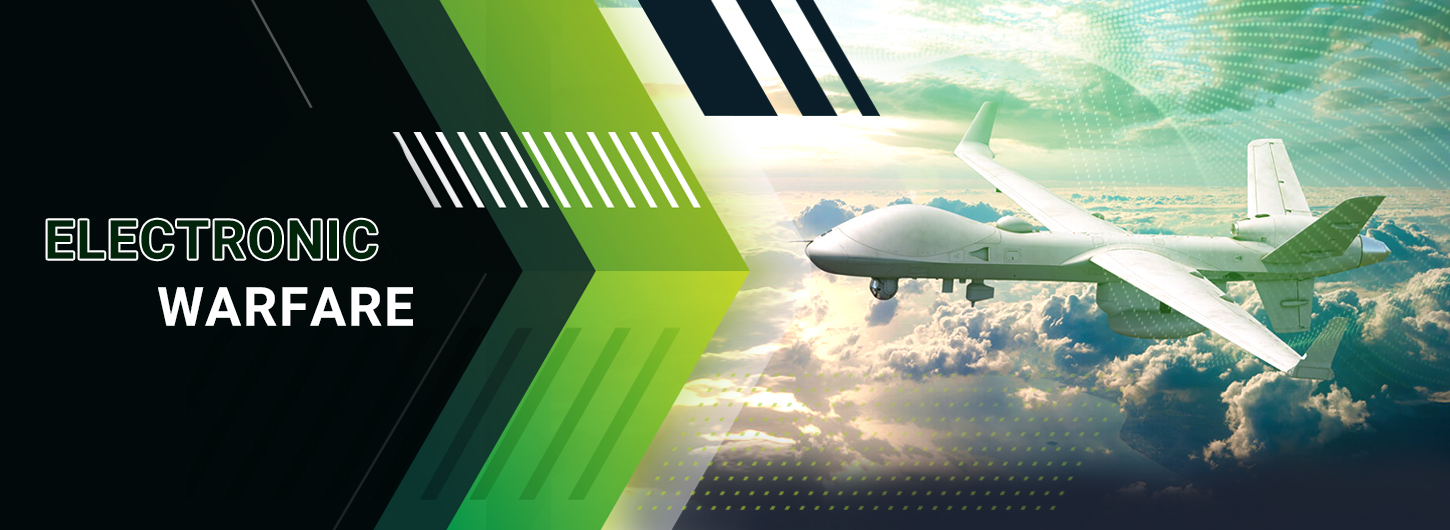
Electronic Warfare
Dioon manufactures a variety of products specifically designed for integration into Electronic Warfare systems. Our products cover the full range of Electronic Support (ES) and Electronic Attack (EA) disciplines in the communications frequency bands.
Electronic warfare systems can be designed for wide range of missions and utilize a host of various subsystems. In any case, regardless of this incredible sophistication and diversity, there are three main capabilities common to most electronic warfare systems – sensing the environment (receiver sensor), analyzing the environment (signal analysis), and responding to the environment (technique generation and high power transmission).
The military uses the electromagnetic spectrum to identify, deceive and disrupt the enemy while protecting friendly forces. As adversaries become more skilled and threats more complex, As enemies become more skilled and threats more perplexing. As adversaries become more skilled and dangers more intricate, controlling the range is increasingly critical.
The electromagnetic spectrum contains both the visible and invisible ranges, estimated in megahertz, of the spectrum. Electronic warfare is the utilization of signals that intercept, locate, recognize, detect, interrupt, deceive, secure, analyze, and cryptanalyze. Electronic warfare can be utilized to provide intelligence or combat power like jamming, disruption, or deception.
Electronic warfare discovers, interprets, monitors or disrupts signals in the electromagnetic spectrum, usually radar, radio or infrared transmissions, to protect military assets from potential dangers.
Electronic Warfare (EW) refers to the use of electromagnetic spectrum (EM) to gain an advantage in military operations. It involves the control, denial, or exploitation of the electromagnetic spectrum, including radio frequencies, to support friendly forces, disrupt enemy operations, and protect critical infrastructure.
Here are some key aspects of Electronic Warfare:
-
Electronic Support (ES): ES involves the collection and analysis of electromagnetic emissions, such as radar signals, to gather information about potential threats. This information helps in identifying and locating enemy systems, such as radars, communication networks, or electronic devices.
-
Electronic Attack (EA): EA aims to degrade, disrupt, or destroy enemy electronic systems and communications. This can be achieved by jamming, spoofing, or deceiving enemy sensors and communication channels. EA can neutralize enemy radars, disrupt command and control networks, or interfere with enemy electronic devices.
-
Electronic Protection (EP): EP involves measures taken to protect friendly electronic systems from being intercepted, disrupted, or exploited by the enemy. It includes techniques like signal encryption, frequency hopping, and employing stealth technologies to reduce the vulnerability of friendly systems to electronic attacks.
-
Electromagnetic Warfare Support Measures (ESM): ESM refers to the process of gathering intelligence through passive listening and analysis of enemy electromagnetic emissions. It helps in detecting and identifying enemy platforms, systems, and activities without actively transmitting any signals.
-
Cyber Electronic Warfare (CEW): CEW combines traditional EW techniques with cyber capabilities. It involves the use of computer networks, software, and cyber tactics to target and exploit vulnerabilities in enemy electronic systems. CEW can disrupt or disable enemy networks, compromise data integrity, or launch cyber-attacks to gain a tactical advantage.
Electronic Warfare plays a crucial role in modern warfare by providing commanders with enhanced situational awareness, denying the enemy the use of their electronic systems, and protecting friendly forces and critical infrastructure from electronic threats. It is utilized by various military branches, including the army, navy, air force, and special operations forces, to gain an edge in the electromagnetic battlespace.
